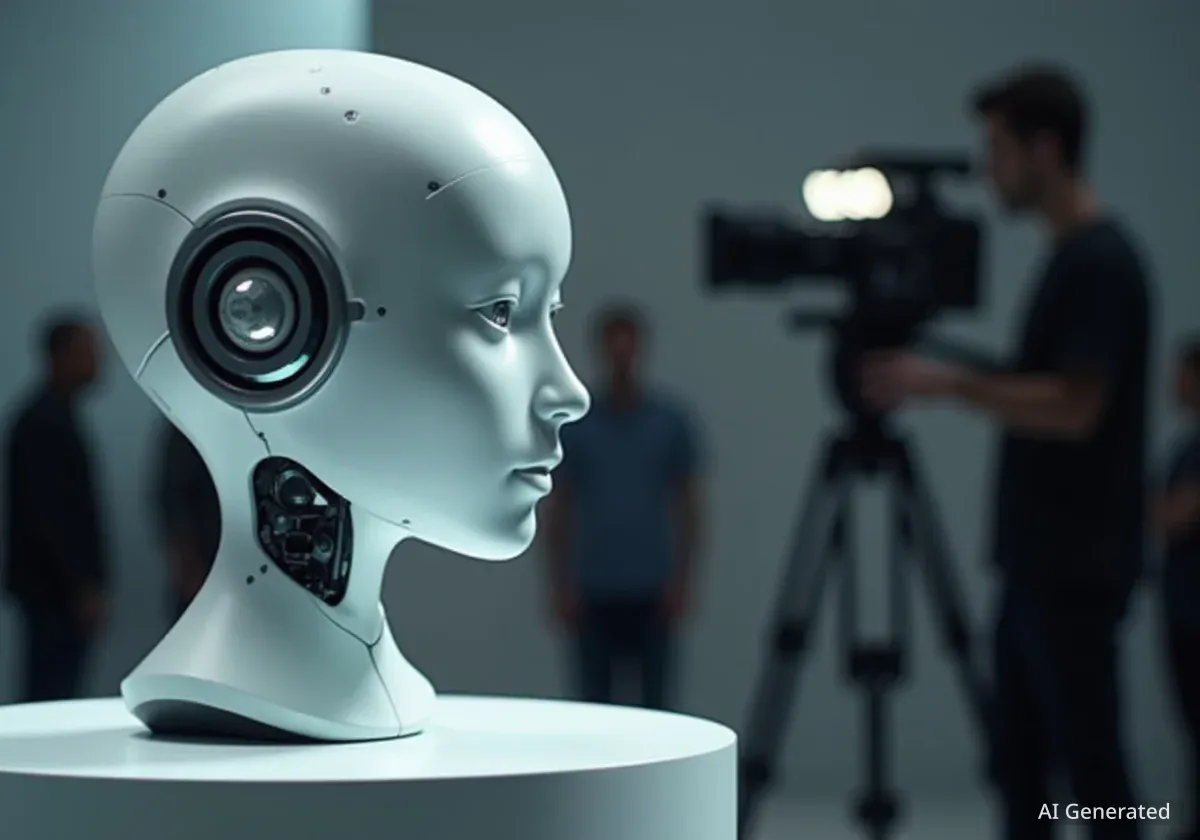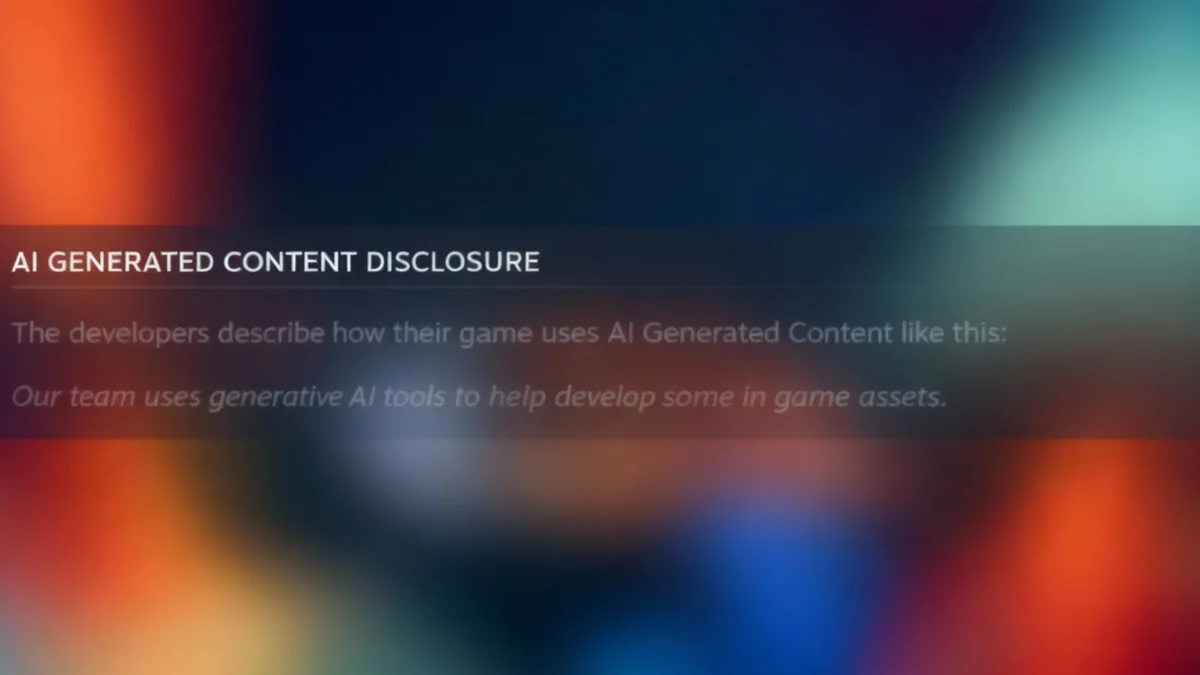A UK-based production company has introduced Tilly Norwood, a fully digital actress created with artificial intelligence. The innovation from Particle 6 Productions is generating significant discussion within the entertainment industry, attracting interest from talent agencies while raising concerns among actors' unions about the future of performance.
Key Takeaways
- Tilly Norwood is a synthetic actress developed by Particle 6 Productions using a combination of ten different AI programs.
- Her creator, Eline van der Velden, envisions AI performers as a tool to overcome budget limitations in filmmaking.
- The actors' union SAG-AFTRA has criticized the concept, stating that AI characters are trained on human work without compensation and lack genuine emotion.
- The development highlights a growing conflict between technological innovation and traditional creative roles in Hollywood.
Introducing a New Form of Performer
The entertainment world is confronting a new technological frontier with the arrival of Tilly Norwood. Unlike human actors, Tilly does not have a physical presence. She is a digital creation, engineered by Particle 6 Productions, a company that merges filmmaking with advanced AI technology.
Tilly has been designed to exhibit a wide range of emotions and perform in various genres, from dramatic crying scenes to moments of laughter. Her creators have released demonstration clips to showcase her capabilities, presenting a performer who appears ready for major roles but can be altered with simple text prompts.
The project is led by Eline van der Velden, a former physicist and actor who now heads Particle 6. Her goal is to establish Tilly as a mainstream digital star, comparable to well-known human actresses.
Background on Synthetic Media
The concept of digital characters is not entirely new. AI-powered influencers and virtual pop stars have gained popularity on social media platforms in recent years. However, Tilly Norwood represents a more direct effort to position a synthetic creation as a direct competitor to professional actors in high-end film and television productions.
The Technology and Vision Behind Tilly
The development of Tilly Norwood was a complex process undertaken by Xicoia, the specialized AI talent division within Particle 6 Productions. According to the company, her appearance and performances were refined over several months using a suite of ten distinct AI programs.
This multi-layered approach allowed the team to fine-tune her facial expressions, emotional delivery, and overall realism. The objective was to create a digital performer who is both versatile and consistently available, without the physical limitations of a human actor.
"We want Tilly to be the next Scarlett Johansson or Natalie Portman," van der Velden stated in an interview with Broadcast International. "People are realizing that their creativity doesn’t need to be boxed in by a budget."
From a production standpoint, an AI actor offers several advantages. Tilly does not require rest, is not susceptible to public controversy, and does not age. These factors present a compelling economic argument for studios looking to manage costs and long-term project planning.
Hollywood's Divided Response
The introduction of Tilly Norwood has prompted a polarized reaction from the entertainment industry. On one side, there is commercial interest. Van der Velden has reported that talent agencies have already expressed interest in representing the digital actress, signaling a potential market for synthetic performers.
However, this interest is not shared by organizations representing human actors. The Screen Actors Guild – American Federation of Television and Radio Artists (SAG-AFTRA) issued a firm statement challenging the legitimacy of AI performers.
SAG-AFTRA's Position on AI Actors
The union argues that AI characters are fundamentally different from human actors. They contend that such creations are developed using vast amounts of data, often derived from the work of professional performers, without their consent or financial compensation.
"Tilly Norwood is not an actor. It’s a character generated by a computer program trained on the work of countless professional performers—without permission or compensation," SAG-AFTRA's statement read. "It has no life experience to draw from, no emotion."
The union's primary concern is that digital replicas threaten job opportunities for human actors rather than creating new ones. They believe that audiences connect with the human experience that actors bring to their roles, an element that a computer program cannot replicate.
The Core of the Debate
The central conflict revolves around the definition of performance. Proponents see AI as a new tool for storytelling, while critics view it as a technology that devalues human artistry and exploits existing creative work without attribution or payment.
Implications for the Future of Entertainment
The emergence of figures like Tilly Norwood raises fundamental questions about the future of creative industries. For film and television studios, the appeal of a tireless, ageless, and scandal-proof actor is undeniable. This could lead to a shift in how productions are cast and managed, particularly for long-running franchises or roles requiring extensive digital effects.
The potential economic benefits for studios include:
- Reduced Costs: Eliminating salaries, trailers, and other accommodations for high-profile actors.
- Unlimited Availability: AI actors can work 24/7 without risk of burnout or scheduling conflicts.
- Creative Control: Directors can modify a performance with a simple prompt, offering unprecedented control over the final product.
- Longevity: Characters can remain the same age indefinitely, which is ideal for franchises spanning many years.
Conversely, the concerns for human performers are significant. The widespread adoption of AI actors could lead to fewer roles, downward pressure on wages, and a fundamental change in the craft of acting. The debate also touches on intellectual property, as the data used to train these AI models often includes copyrighted performances.
The Creator's Counterargument
Eline van der Velden has pushed back against the idea that AI actors are a replacement for humans. As a former actor herself, she frames the technology as an innovative tool, not a substitute for human creativity.
On her LinkedIn profile, she argued that audiences are primarily invested in the story itself, not the biological status of the performer. "The age of synthetic actors isn’t coming," she wrote. "It’s here." She describes Tilly as a "new paintbrush" for creators, enabling them to tell stories that might otherwise be impossible due to financial or logistical constraints.
As this technology continues to evolve, the entertainment industry will have to navigate complex ethical, legal, and artistic challenges. The case of Tilly Norwood is an early but important indicator of the changes that may lie ahead for actors, studios, and audiences alike.





